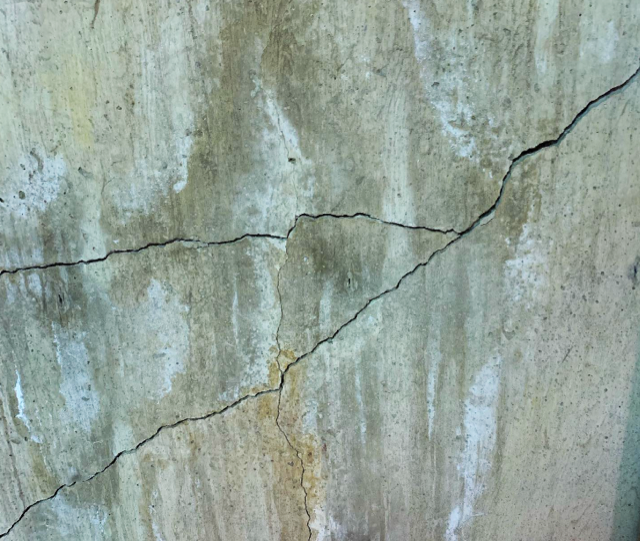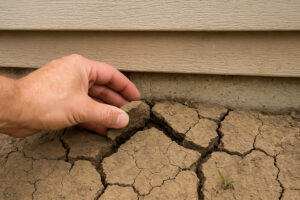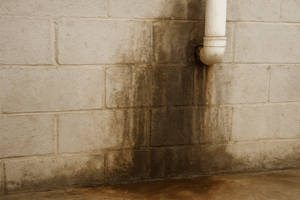As it cools off here in Alberta, windows are open less and you’re spending more time inside. As a result, odours you may have missed all summer suddenly become more noticeable. What’s going on?
If you head down to the basement and notice higher humidity than usual, it may be because your concrete basement walls are porous and cracked. When the soil surrounding your home is soaked with water, external water pressure builds up, leading to compromised structural integrity of your foundation walls.

This force, known as hydrostatic pressure, can lead to damage from water and moisture seeping into the basement. Ultimately, the damp air finds its way into the living areas of your home. If you have a humid basement or the walls feel clammy when you touch them, consider purchasing a dehumidifier, then get to work correcting common outdoor problems that cause excessive moisture in the first place.

Proper Grading
During construction of a new home, the surrounding land is usually graded to slope away from the foundation, helping to move moisture away from the structure. Over time, erosion and soil compaction can change reduce the original grading and make it less effective. In many cases, we have seen landscaping slope toward the house, inevitably funneling water toward the foundation. If this is the primary cause, it’s critical that you address the problem sooner than later.
You can add fill dirt around your foundation to correct the grading. But if you have a concrete slab patio or driveway against your foundation that’s below grade, you may need to have the concrete replaced. You may also want to consider replacing the dirt near your foundation with gravel to help reduce the hydrostatic force on the basement walls and improve drainage conditions.
Exterior Drainage
It is absolutely critical to clean your gutters every fall to remove leaves and other debris. Gutters are intended to move rainwater away from your home, but when they’re clogged, rainwater will spill over the edges and flow down toward your foundation. A good tip is to observe rainfall off your roof during a rainstorm. If you see massive spillage and overflow, it’s time to get up there and clean them out. Gutters should also empty at least three feet from the foundation. Missing gutter extensions can pool water right beside your foundation instead of properly directing water away onto your property.
Plants too close to your exterior wall can create drainage problems too. They should be at least three feet from exterior walls, so excess moisture from watering doesn’t build up adjacent to your foundation. This is important because early cold snaps can freeze the water already seeped into your foundation. Expanding frozen water can make the most insignificant crack into something much more serious in a short period of time.
By correcting causes of excess moisture outside your home, you may be able to protect your foundation from water damage. But if you notice interior problems like stair-step cracks in walls, mildew between cinder blocks or mold growth, you may want to have a foundation repair professional like Shield Foundation Repair inspect your home for damage.
If you suspect impending foundation damage from water seepage this fall, talk to one of our friendly staff at 780 760 4900 to arrange for an inspection and talk about options available to make your foundation right before the long winter sets in.




